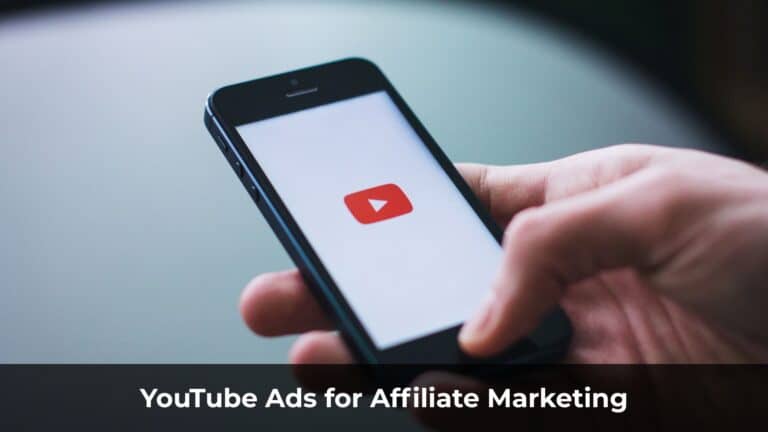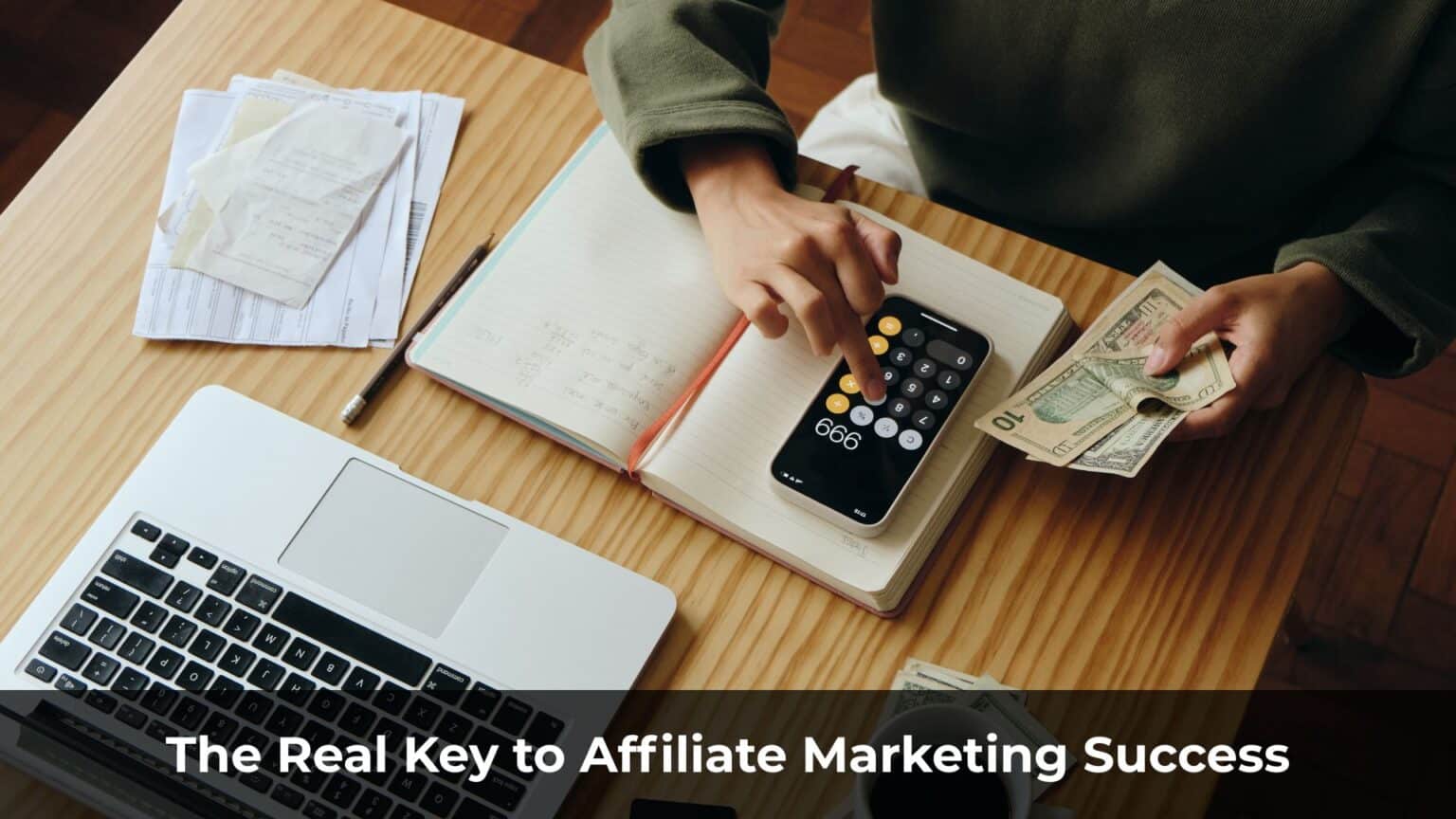When you start affiliate marketing, it’s easy to feel overwhelmed with questions like:
- “What is split-testing?”
- “I’m making $50 a day… how do I get more traffic?”
- “This is tough! There are so many steps! What exactly should I do? I need a step-by-step guide for beginners.”
If you’re struggling to get your affiliate campaign off the ground, this guide is for you.
I’ve broken down my process into 10 simple steps, so you can follow along easily and launch your first profitable campaign in no time.Let’s keep it simple and get started!
Table of Contents
ToggleChoosing Your Traffic Source
The first step is to identify your traffic source and the offer you want to promote. My approach is to focus on mastering one traffic source first, then find offers that align with it.
There are countless places to buy traffic, but for beginners, Facebook Ads are one of the best options.Of course, there are many ad platforms to start affiliate marketing, but I find Facebook Ads to be the easiest for generating revenue.

I’ve shared a traffic source here, but I know some of you might overanalyze, trying to find the ‘perfect‘ traffic source
Here’s the thing: there’s no such thing as the ‘best’ source, because each one has its pros and cons. Do your research and make a decision.
Don’t be like those who spend a whole month planning their gym routine without ever actually working out. Taking action—even if you fail—will teach you far more quickly than staying stuck in place.
When I choose a traffic source, I typically go for those that have been proven to work, have been around for years, and are widely used.
If you fail with Facebook ads, the problem isn’t Facebook—it’s your strategy. Many others are making profits with Facebook, so the issue lies with how you’re using it.But, if you dive into an untapped traffic source, it’s harder to know if the problem is your campaign or the traffic source itself.
When selecting an offer, base your decision on the following:
- Researching ads from other affiliates to understand what works.
- Engaging with affiliate managers, consulting your team, or seeking advice from experts.
- Keeping an eye on trending topics in the industry.
- Exploring all the valuable content on JamesTheMarketer.com for insights and strategies.

Analytical thinking & product research
Beginners in affiliate marketing often launch campaigns with the hope that they’ll be profitable, while experienced affiliates typically conduct thorough research before getting started.
Have you chosen a traffic source or affiliate network yet? If not, begin with some research:
A. Use Spy Tools
Who else is promoting this offer?
Don’t limit yourself to just affiliates. If you’re selling diet products, take a look at what major players like Jenny Craig and WeightWatchers are doing.
If you’re in the dating niche, check out what platforms like Match.com are up to. I recommend using Adplexity for this kind of research.
B. Talk to Affiliate Managers
Don’t just view affiliate managers as the ones who pay you. They have a broad perspective and valuable insights into affiliate marketing.
They can offer valuable advice on strategy, trends, and what works in the affiliate marketing world, making them an essential resource for your success.
So get to know them, as they could be your reliable teammates.
C. Research Offers
Analyze ads from other affiliates to understand how they optimize their campaigns.
Study your audience and dive deeper into your niche to discover what works.
Use spy tools to search for and take notes on the best-performing ads and landing pages currently being used.
D. Where to Promote the Offer
If the offer is exclusive to one network, there’s not much to worry about. However, if it’s available across multiple networks, you should test it on each one.
Even if the product is the same, conversions can vary due to differences in tracking software or, at times, manipulative practices by certain networks.
Product Promotion Strategy & Planning
Never go into battle without first studying the strategy.
I usually create a simple flowchart of the campaign to help visualize the overall structure. I also set mini-goals and deadlines for each step along the way.
Pro tip: Don’t over-plan. Once real campaign data starts coming in, you'll need to adjust your strategy anyway, so keep it flexible.
How to create high-converting ad
What kind of ad creative and landing page are you planning to use? A lazy affiliate might skip the hard work and simply copy someone else’s landing page.
But if you want to be creative—and actually make money—you’ll need to follow a few key steps:
- Research your angle and write compelling headlines.
- Choose the right images for your ads.
- Design a custom landing page.
So, how exactly do you create an ad that grabs attention and converts? It’s hard to explain, but I’ll give it a shot.
Personally, I’ve developed a habit of collecting ad creatives I find online. I tend to ignore most ads, so when one actually catches my attention, it’s usually a sign that it’s effective.
I have a folder on my computer filled with thousands of images from online ads, and it’s my go-to resource whenever I need inspiration for a new campaign.
Inspiration can strike from anywhere.
The only real way to get good at ads is through practice and experience—lots of it.
Before long, you’ll develop a sense for which ads have potential, even before running a single test.

Setting up a proper campaign
Here’s a checklist to help you launch your campaign the right way:
- Tracking system – Never run a campaign without tracking. I use Voluum.
- Hosting – At the very least, get a VPS.
- Domain – Buy it from Namecheap. Remember to enable WHOIS protection—it can help you avoid legal trouble.
- Landing page – I always host my landing pages separately from the tracking server to improve speed and performance.
Before launching the campaign, make sure to check:
- Ad approval – Platforms like Google and Facebook may take time to review and approve your ads.
- Tracking setup – Double-check that your tracking software is fully configured before going live.
Run campaigns and collect data
I always launch my campaigns with a small budget—usually under $50.
The goal is to make sure everything is working properly: no setup mistakes, no broken links, nothing missed.
It’s far better to double-check everything upfront than to lose thousands later due to a small misconfiguration.
At this stage, my primary focus is on collecting data—statistically significant data.
Go deep with your testing, and don’t rush to make decisions based on early results.
Split testing and campaign optimization
In most cases, your first campaign will lose money. That’s normal. The key is to optimize—turning a losing campaign into a profitable one.
Once you’ve gathered enough data, it’s time to start making smart decisions. Keep optimizing the campaigns that show potential, and cut the ones that don’t.Optimization means continuously testing and tweaking to improve your ROI.
You’ll need to test repeatedly to uncover what actually works.
Here’s a real-life example:
- Initial Launch – Campaign starts at around -50% ROI. You’re losing money.
- Test #1 – Try 3 different offers. Pick the best-performing one. You improve to -30% ROI.
- Test #2 – Test 10 different ad creatives. Keep the top 3. Now you’re at -10% ROI.
- Test #3 – Test 5 landing pages. Choose the highest-converting one. You reach +35% ROI.
Note: Results can vary depending on the traffic source and the unique circumstances of each affiliate campaign.
Keep testing until you’ve reached the highest possible ROI—only then should you scale your campaign.Many affiliates get lazy with optimization. They launch a campaign and simply hope that money will start flowing in.
But here’s the truth: you’re not waiting for a win—you’re creating one.
I can guarantee this: the one thing all newbies have in common is they quit the moment they start losing money.
If you’re a newbie, you need to push through. You must rewire your mindset—losing money is part of the process.
It’s an investment. An investment in knowledge and data.
Even when you lose money, the experience you gain is never a waste.
I can’t go too deep into optimization here, as it’s part of my secret formula, which I only share in detail in my Affiliate courses.
But here are a few key elements you can optimize:
A. Ad Creatives
Don’t get too fixated on CTR. An ad can have a high CTR but still convert poorly.
For example, let’s say you’re promoting car insurance with an image of a beautiful blonde standing next to a Lamborghini.
You’ll likely get a lot of clicks, but very few people will actually buy the insurance. They’re clicking because they’re interested in the girl, not the product.This is why you must track your campaigns properly and analyze your data. Without doing so, you won’t know what’s broken or how to fix it.
B. Landing Page
Test different landing pages—experiment with images, headlines, layouts, and messaging. Even small changes can have a big impact.
Start with A/B testing: create two versions of a landing page and send equal traffic to both. Monitor performance based on conversion rate, bounce rate, and time on page. Use tools like Google Optimize, VWO, or Unbounce for easy testing.
C. Ad Cost and Bidding
There’s no one-size-fits-all formula for bidding. Many affiliates develop their own strategies.
Test it for yourself—try starting with low bids and gradually increasing, or go from high to low, and see what performs best.
D. Time Segmentation (Daily & Weekly)
Once you have enough data, you’ll start seeing which times of day bring the best results.
For example, your campaign might be most profitable between 5 PM and 12 AM—so focus your ads during that time window.
Weekly segmentation works the same way. If certain products perform better on weekends, prioritize running ads on those days.

E. Test Offers
Test multiple offers. Once you have several campaigns running, ask your affiliate network to increase your commissions.
I encourage you to develop your own optimization formula, but remember, different traffic sources require different approaches. Optimization on Facebook ads will differ from optimization on mobile ads.
Data analysis and initial profits
After testing your campaign, you’ll collect valuable data. Here are some techniques I use to improve my campaigns:
a. Keep detailed records of daily statistics
Just relying on the tracking tool isn’t enough.
Every morning, I transfer all the data into an Excel sheet. This helps me get an accurate view of the numbers: the amount spent, the clicks, the profits, etc.
I also use Excel to convert the data into charts, making it easier to analyze and spot trends.
b. Apply the 80/20 principle
At this point, I ask myself: Which factors, if changed, will have the biggest impact on the campaign’s performance?
c. Keep running the campaign or stop it?
Just because a campaign is bringing in profit doesn’t mean you should continue running it.
What’s its potential? Should you keep a campaign making $5/day, or should you invest your time in finding one that makes $100/day?When managing multiple campaigns, you need to decide which ones are truly worth your time.
d. Ask yourself: How can I systematize this campaign?
Is there any part of the process that I can outsource or delegate to someone else? This can help streamline your efforts and improve efficiency.

Scale campaigns, expand the scope
I don’t usually run a $100/day campaign. Scaling a campaign means turning that $100 into $1,000 or even over $10,000/day.This is the key difference between paid traffic and free traffic in affiliate marketing.
With paid ads, scaling your campaign is relatively easy.
So, how do you scale?
You need to expand your ad reach. If you’re targeting 1 million people, try increasing it to 10 million.
Look for other traffic sources—expand to similar platforms.
For example, if you’re generating profits from PropellerAds, consider exploring a similar source like RichPush (both offer “push notification” traffic on Android devices).
Target more countries.
Does your offer accept customers from multiple countries?
If yes, translate your landing page and test ads in other regions. You can use AI to translate the landing page.
Keep in mind that an offer profitable in the US may not convert as well in the UK. There are various factors to consider.
How to get more traffic?
Test more placements—this means placing your ads on different websites.
Experiment with ad sizes—if you’re running 300×250, try 728×90 or 600×120.
Increase your bid—raising your bid could potentially get you more traffic (though actual results may vary).
That’s why constant campaign upgrades are necessary. The more you earn, the higher you can bid, and the fewer competitors you’ll face.

Campaign maintenance and upgrading
This is crucial.
Once people start making money, they often get excited, but they also tend to slack off and become complacent.
After running thousands of ad campaigns, I’ve learned one important lesson: when you start seeing profits, distractions will begin to appear.Quick Story:
Affiliate A and Affiliate B both earn $1,000/day with 100% ROI from the same traffic source and niche.
Affiliate A gets complacent and lazy. He starts running campaigns in different niches, losing focus in the process.
His 100% ROI drops to 0 because his banners were stolen by competitors, the offers paid less, and he faced quality issues with the ads. The new niches didn’t work either, and he ends up back at $0.
Affiliate B keeps working hard and constantly improves his campaigns.
He consistently tests new ad creatives and landing pages, always on the lookout for new offers.
Starting with 100% ROI, he boosts it to 200%. Even though his banners were stolen and the offers paid less, he still maintains a 100% ROI by testing new creatives and because one of the big competitors gave up.
You shouldn’t just create a campaign and forget about it. If you’re making money, others will take notice. Your ads, landing pages, and funnels will eventually be copied.It’s time to take action…
You have everything you need to launch a successful campaign.
Don’t overthink it. Don’t create excuses to hold yourself back or deceive yourself.
Don’t wait for the “perfect moment”—because it doesn’t exist.
It’s time to move forward, even if things aren’t 100% ready. Progress beats perfection every time.
Start small if you have to. Launch the campaign. Test. Learn. Improve. Every step you take brings clarity—and clarity leads to results.
Remember, action creates momentum. And momentum is what separates those who succeed from those who just keep planning.
So go ahead—hit publish, run that ad, and trust yourself. You’ve got this.













